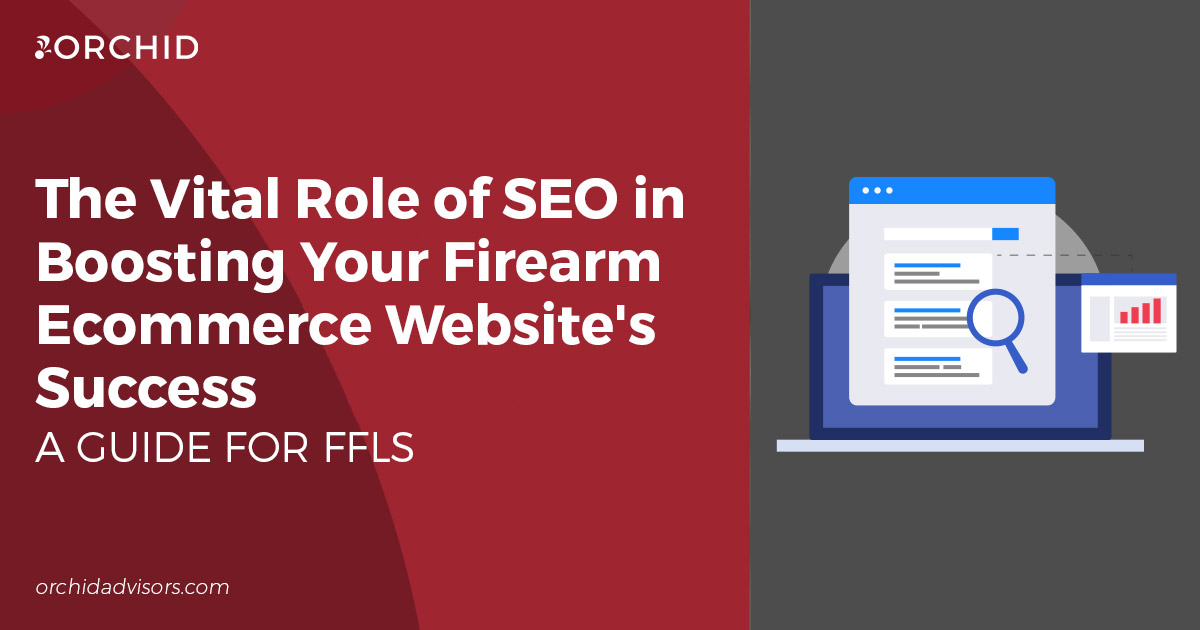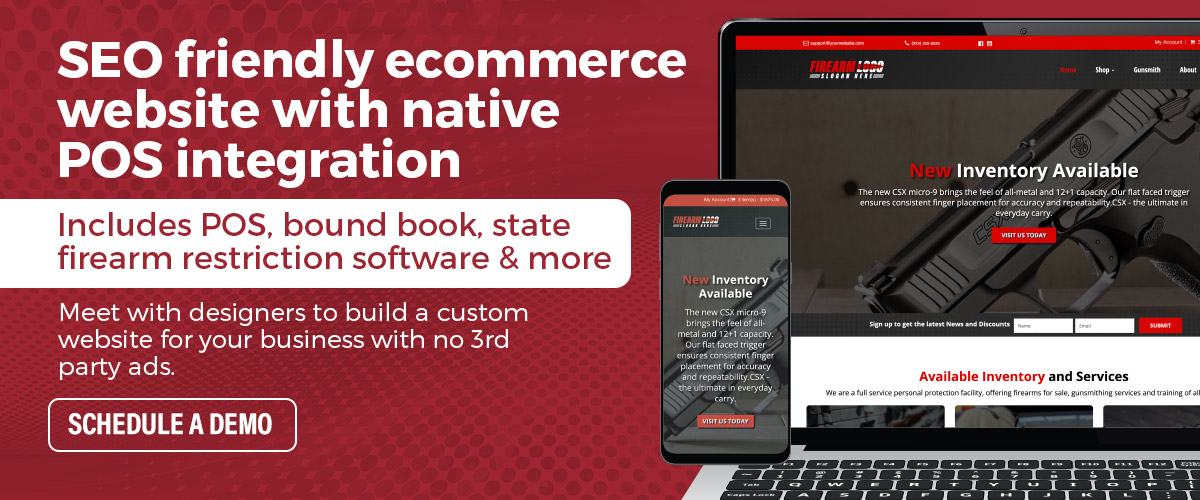In today’s digital age, establishing a strong online presence is crucial for any business, including those in the firearms industry. For Federal Firearms License (FFL) holders looking to expand their reach and increase sales, creating an ecommerce website is an excellent strategy. To help stand out from the competition and attract potential customers, improving your sites Search Engine Optimization (SEO) is paramount. Let’s explore the importance of SEO for a firearm ecommerce website and how it can drive traffic, improve visibility, and lead to higher conversions.
What is SEO?
SEO stands for Search Engine Optimization. It is the practice of optimizing a website, its content, and its structure to improve its visibility and rankings in search engine results pages (SERPs). The primary goal of SEO is to attract organic (non-paid) traffic to a website and increase its chances of being discovered by users searching for relevant information, products, or services.
Search engines, such as Google, Bing, and Yahoo, use complex algorithms to determine the relevance and quality of websites when responding to user queries. SEO involves understanding these algorithms and implementing various strategies to align a website with the search engine’s ranking criteria.
What are the benefits of having an SEO strategy?
Increasing Website Visibility – With millions of websites competing for attention on the internet, getting your firearm ecommerce website to appear on the first page of search engine results is a daunting challenge. This is where SEO becomes your greatest ally. By optimizing your website’s content, meta tags, keywords, and overall structure, you can enhance its search engine rankings and increase visibility. When potential customers search for firearms-related products, your website will be more likely to appear at the top of the search results, leading to higher organic traffic.
Driving Qualified Traffic – Unlike traditional advertising methods, where you target a broad audience, SEO drives highly targeted traffic to your firearm ecommerce website. When your website ranks well for specific firearm-related keywords, the visitors coming through search engines are more likely to be genuinely interested in your products. This targeted traffic is more likely to convert into leads and sales, making SEO a cost-effective marketing strategy.
Building Credibility and Trust – A well-optimized website that appears high in search results conveys a sense of credibility and trust to potential customers. Users tend to trust search engines, and when your website ranks well, it indirectly validates your business as a reliable source for firearms and accessories. This trust-building aspect is invaluable in the firearms industry, where customers prioritize safety, legality, and trustworthiness when making purchases.
Improving User Experience – SEO is not just about pleasing search engines; it also focuses on providing a positive user experience. Search engines like Google consider factors such as website loading speed, mobile-friendliness, and user-friendly navigation when determining rankings. By optimizing these aspects, you ensure that visitors to your firearm ecommerce website have a smooth, enjoyable experience, which can lead to higher customer satisfaction and repeat business.
Gaining an Edge Over Competitors – In a competitive industry like firearms, every advantage matters. By investing in SEO for your website, you can outperform your competitors and gain a competitive edge. When your website consistently appears above others in search results, you increase your chances of attracting potential customers away from competing websites.
Key Components of SEO
- On-Page SEO: On-page SEO involves optimizing individual web pages to make them more search engine-friendly. This includes optimizing meta tags (title tags, meta descriptions), using relevant keywords in the content, optimizing headings, improving page loading speed, and ensuring the website is mobile-friendly.
- Off-Page SEO: Off-page SEO refers to the activities that take place outside the website to improve its visibility and reputation. It includes building backlinks from other reputable websites, social media marketing, guest blogging, and online reputation management.
- Keyword Research: Keyword research is a critical aspect of SEO. It involves identifying the specific words or phrases that users are likely to use when searching for content related to your website. By incorporating these keywords strategically into your content, you increase the chances of your website ranking higher in relevant search queries.
- Content Creation: High-quality, valuable, and relevant content is essential for SEO. Search engines aim to provide users with the most informative and useful content in response to their queries. Regularly publishing fresh and engaging content not only improves search engine rankings but also keeps users coming back to your website.
- User Experience: Search engines prioritize websites that offer a positive user experience. This includes factors such as website speed, mobile responsiveness, easy navigation, and the absence of intrusive ads or pop-ups.
- Technical SEO: Technical SEO involves optimizing the technical aspects of a website to improve its crawling and indexing by search engines. This includes creating a sitemap, optimizing URL structures, using proper header tags, and ensuring the website is secure with an SSL certificate.
Actionable ways to enhance SEO
Improving SEO involves a combination of optimization strategies. Below is a list of some actionable ways to enhance your website’s SEO. It’s worth noting that SEO is an ongoing process, and it takes time to see significant results. But by consistently applying these SEO best practices, you can improve your website’s visibility, attract more organic traffic, and enhance your overall online presence.
- Google Search Console: Create a Google Search Console account for your website to help monitor and maintain your website’s presence in Google Search results. It provides data on search queries, indexing status, and issues that may affect your site’s performance in search.
- Monitor Analytics: Regularly review your website’s performance through tools like Google Analytics. Analyze user behavior, traffic sources, and conversion rates to identify areas for improvement.
- Keyword Research: Conduct thorough keyword research to identify relevant and high-traffic keywords related to your business. Use tools like SpyFu, Ubersuggest, or SEMrush to find valuable keywords that align with your content. Once you identify these keywords, begin building useful and quality content around them.
- Quality Content: Create high-quality, informative, and engaging content that addresses the needs and interests of your target audience. Use your chosen keywords naturally within the content, headings, and meta tags.
- On-Page Optimization:
- Optimize meta tags: Craft compelling title tags and meta descriptions that accurately describe the content on each page and include the target keywords.
- Use header tags: Organize your content using H1, H2, H3 tags to indicate the hierarchy and structure of the information.
- Optimize URL structure: Create clean and descriptive URLs that include relevant keywords and make it easy for both users and search engines to understand.
- Mobile-Friendly Design: Ensure that your website is fully responsive and optimized for mobile devices. Google prioritizes mobile-friendly websites in its search results.
- Page Loading Speed: Improve your website’s loading speed by optimizing image sizes, using caching, and selecting a reliable hosting provider. Faster-loading pages rank higher and provide better user experiences. Google PageSpeed Insights is a great free tool to evaluate your website’s loading speed and provides suggestions to optimize performance for both desktop and mobile devices.
- Internal Linking: Create a logical internal linking structure to help search engines understand the relationships between your web pages. This improves crawlability and user navigation.
- Build Quality Backlinks: Earn high-quality backlinks from reputable and relevant websites. Focus on creating valuable content that naturally attracts inbound links from other sources.
- Social Media Engagement: Utilize social media platforms to promote your content, reach a broader audience, and encourage sharing. Social signals can indirectly impact SEO.
- Guest Blogging: Contribute valuable content to reputable websites in your niche. This can help build your authority and attract more traffic to your website.
- Secure Your Website: Implement HTTPS and an SSL certificate to ensure a secure browsing experience for your visitors. Search engines prioritize secure websites.
- Local SEO: If you have a physical location, optimize your website for local searches by creating a Google Business Profile and ensuring consistent NAP (Name, Address, Phone number) across directories.
- Regular Updates: Keep your website’s content fresh and up-to-date. Regularly update blog posts, product pages, and any other relevant information to provide value to your audience and search engines.
Additional SEO Tools
In addition to tools like, google analytics, google search console and google page insights, below are SEO tools to further help with research.
- SEMrush: An all-in-one SEO platform that offers a wide range of tools, including keyword research, site audits, competitive analysis, rank tracking, and more. SEMrush is suitable for both SEO professionals and beginners.
- Moz: Offers a suite of SEO tools, including keyword research, link analysis, on-page optimization, and rank tracking. Moz’s “Domain Authority” metric is widely used to gauge the authority of a website.
- SpyFu: An online competitive intelligence tool that provides valuable insights and data related to SEO and pay per click (PPC) advertising. It allows users to research and analyze their competitors’ online marketing strategies, keyword rankings, backlinks, and advertising campaigns.
- Ubersuggest: A user-friendly SEO tool that provides keyword ideas, content suggestions, backlink data, and competitive analysis. It’s a great option for those looking for a budget-friendly tool.
- Screaming Frog: A website crawler tool that helps you identify issues with your site’s structure, internal linking, and meta data. It’s useful for conducting site audits and finding technical SEO issues.
- BuzzSumo: While primarily a content marketing tool, BuzzSumo can also be used for SEO. It helps identify popular content in your niche and provides insights on what performs well in terms of social shares and backlinks.
Conclusion
In conclusion, SEO is a fundamental pillar of success for any firearm ecommerce website. By optimizing your website for search engines, you can increase visibility, drive targeted traffic, build credibility, and gain an edge over your competitors. In the firearms industry, where trust and credibility are paramount, SEO serves as a powerful tool to attract potential customers and increase sales. Utilizing various SEO tools and implementing best practices will lead to a flourishing website in the digital landscape.








![2024 ATF FFL Inspection Violations [Published March 2025]](https://orchidadvisors.com/wp-content/uploads/2025/06/June-16-Blog-Post-ATF.png)
0 Comments